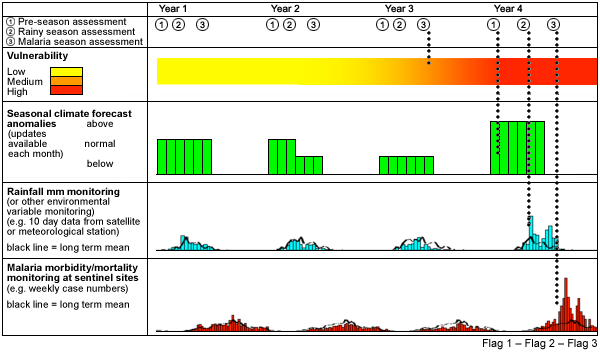Identify the Problem
A survey in 2002 estimated malaria prevalence at 2%, with some villages having up to 30% prevalence. Eritrea has had a successful malaria control program over the last 11 years since a devastating epidemic followed the heavy rains associated with the1997-1998 El Niño event. An intensive mixture of interventions has been applied. This includes widespread coverage with free distribution of impregnated mosquito nets to all malaria risk areas, indoor residual spraying with DDT and malathion in some areas, provision of prompt treatment by village health agents, source reduction, and chemical or biological larval control.
To improve epidemic control in climate sensitive regions, the World Health Organization (WHO) has proposed a framework for the development of integrated malaria early warning systems (MEWS) based on vulnerability monitoring, seasonal climate forecasting, environmental and meteorological monitoring, and epidemiological surveillance (Figure 2).

In this exercise, we explore the potential for using these indicators in the development of a malaria early warning system in Eritrea.
